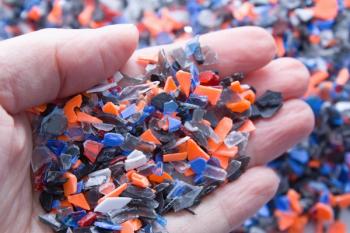
Potassium Isotopic Composition in Plants Analyzed Using MC-ICP-MS
In a new study, a group of scientists investigated the potassium isotopic composition of different plant reference materials using multi-collector inductively coupled plasma mass spectrometry (MC-ICP-MS).
A group of scientists from China investigated the potassium isotopic composition of different plant reference materials using multi-collector inductively coupled plasma mass spectrometry (MC-ICP-MS). Their work was published in Spectrochimica Acta Part B: Atomic Spectroscopy (1).
In this study, the potassium isotopic composition (δ41K) of five certified plant reference materials (BCR 679, GSV-2, GSB-2a, GSB-3 and GSB-6a) with varying potassium concentrations was assessed using MC-ICP-MS. This system employed a reduced radio frequency (RF) forward power and low-resolution mode without a collision cell. The δ41K values of the plant reference materials (BCR 679, GSV-2, GSB-2a, GSB-3 and GSB-6a) were recorded as −2.44 ± 0.03‰, −0.37 ± 0.04‰, −0.37 ± 0.05‰, −1.27 ± 0.04‰ and − 0.62 ± 0.01‰, respectively. According to the study, the δ41K values of plants being presented in this study allowed a methodology for pre-treatment and determination of δ41K in plants to be established. δ41K is now believed to have potential as a notable tracer in ecosystems’ “soil-plant systems”, though further research is needed in this regard (1).
Potassium (K) is crucial for living cells to function. It specifically holds significant importance as a nutrient for plants, comprising up to 10% of plant biomass on a dry weight basis. However, despite being abundant in soil, there is a lack of K availability for plants, which places great importance on understanding the K cycle in soil-plant systems. One recent avenue of analysis is developing high-precision stable K isotopic composition analysis, which allows for the study of both K concentration and isotopic fractionation (1).
Three potassium isotopes exist in nature, 39K, 40K, 41K, with 39K and 40K being the most stable K isotopes. Using MC-ICP-MS, scientists have been able to improve isotope ratio measurements. This enables precision K isotopic analysis to be routinely achieved with precision better than 0.06%. High-precision K isotopic analysis can be achieved using two different approaches. The first involves using high-resolution mode to segregate Ar hydrides and K after the suppression of Ar through the reduction of radio frequency (RF) forward power using cold plasma. The second approach uses the “collision gas” strategy to eliminate Ar-based ionic species.
Reference
(1) He, M-Y.; Ren, T. X.; Jin, Z. D.; Deng, L.; Liu, H. J.; Cheng, Y. Y.; Li, Z. Y.; Liu, X. X.; Yang, Y.; Chang, H. Precise Analysis of Potassium Isotopic Composition in Plant Materials By Multi-Collector Inductively Coupled Plasma Mass Spectrometry. Spectrochim. Acta Part B At. Spectrosc. 2023, 209, 106781. DOI:
Newsletter
Get essential updates on the latest spectroscopy technologies, regulatory standards, and best practices—subscribe today to Spectroscopy.




